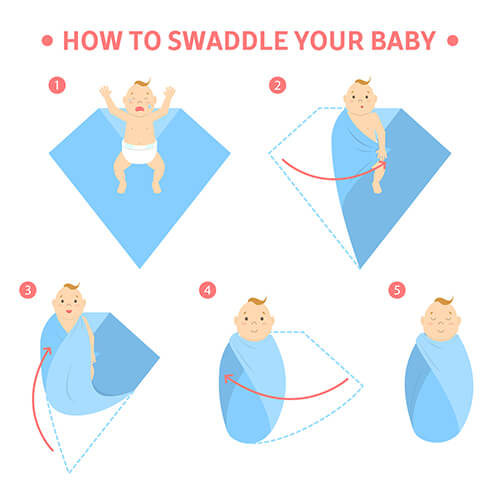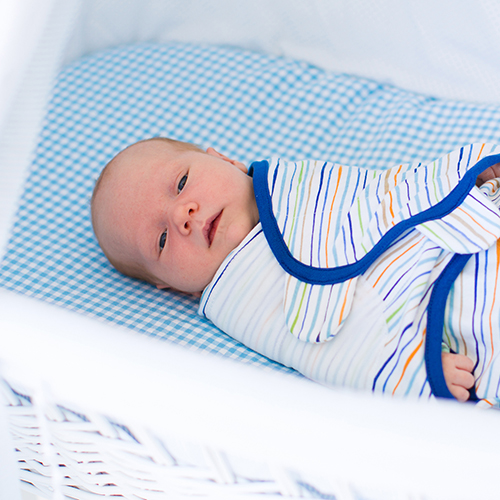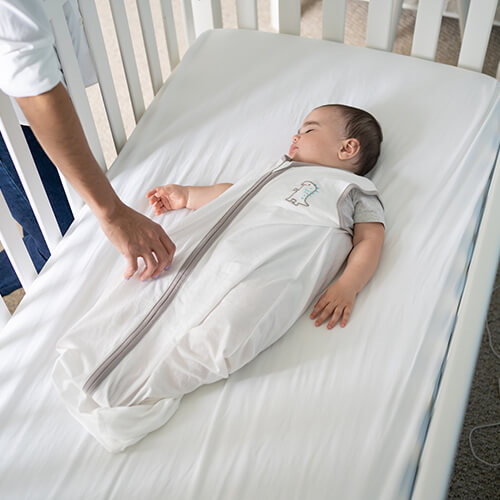Why swaddle?
Many parents like to swaddle their infants. Swaddling can help to calm infants, reduce their startle reflex, promote sleep and can decrease the number of overnight awakenings. You may swaddle up your newborn as snug as a bug in a baby blanket until baby starts trying to roll over, which can happen by 2 months of age. It’s important to stop swaddling once an infant shows signs of attempting to roll.
Option one for swaddling is using a thin blanket and following these steps:

- Step 1: Lay the blanket in a diamond shape and fold the top corner down to form a triangle. Place your baby in the center of the blanket with their head above the fold and shoulders below the fold. It’s important to put baby’s head above the fold so that the swaddle wraps around the shoulders not around the head or the neck.
- Step 2: Fold left side of swaddle over baby’s right arm and torso, tucking under baby’s left arm.
- Step 3: Fold the bottom up over the baby’s feet.
- Step 4: Fold right side of the swaddle over the baby and tuck the excess underneath the baby.
- Swaddle should be snug, below chin and aligned with baby’s shoulders, so that baby stays on their back.

Option two is swaddling with a sleep wrap and following these steps:
- Step 1: Dress baby in lightweight, breathable sleepwear.
- Step 2: Lay out swaddle (like a “T” shape) and place baby’s legs inside the bottom pouch.
- Step 3: Fold left side of swaddle over baby’s right arm and torso and attach left side of swaddle to Velcro in the middle, under baby’s left arm. Repeat on other side and attach right side of swaddle to the Velcro on the outside.
- Step 4: Swaddle should be snug, below chin and aligned with baby’s shoulders.

Many parents see their babies as being a little bit prone to cold. That being said, you can set the temperature of your home to be comfortable. If you are comfortable in the home, your baby will be comfortable. Babies can wear the same number of layers of clothing as you are wearing. So, if you are wearing one layer, baby can wear one layer. At most, you can add one additional layer for baby.